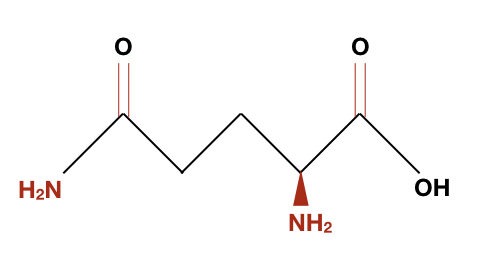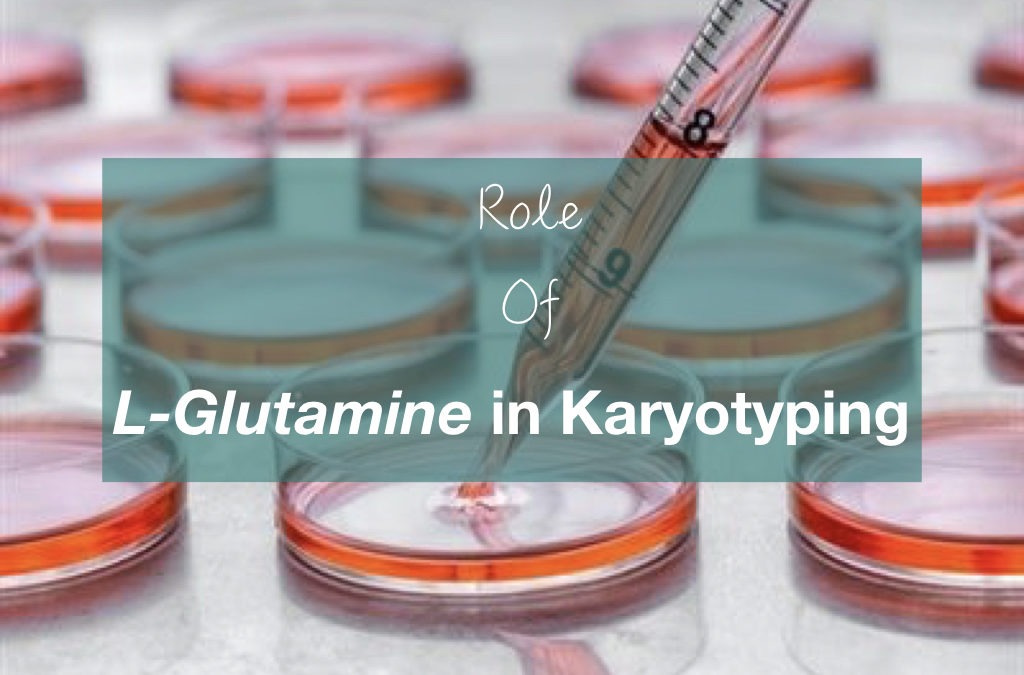The L-Glutamine is an essential amino acid and a secondary energy source required for in vitro cell culture. It is an unmatched requirement for any tissue culture experiment.
Although it is formulated either in the medium directly or can be applied at a time of use, prefer to add separately.
The cytogenetic methods are very sensitive one required a lot of expertise and precision in it.
The chance of failure is very high in every experiment if a single step is not performed properly, further, state of the art laboratory set and 100% sterile environment is required for performing cytogenetic experiments.
We have covered an amazing article on cytogenetics, read it here: A Brief Introduction To Cytogenetics [Karyotyping, FISH and Microarray]
Furthermore, the chemical used in the experiment, its purity and quantity matter a lot as well.
RPMI 1640, Fetal bovine serum, colcemid, EtBr, methanol, glacial acetic acid and L-glutamine are commonly required in the cell culture.
We have explained the role of each chemical in our previous article: A Karyotyping Protocol For Peripheral Blood Lymphocyte Culture
Briefly, the role of each chemical is given below,
- The RPMI 1640 is a complete culture media required for the growth of the cell.
- FBS provides essential nutrients and culturing conditions.
- Colcemid arrests the cells in the metaphase.
- Antibiotics prevent the culture from contamination.
- Methanol and glacial acetic acid are the components of the fixative.
- EtBr helps in chromosomal elongation.
- The L-glutamine is an essential amino acid.
In the present article, we will discuss the role of L- glutamine in the karyotyping and cell culture.
Key Topics:
What is L-Glutamine?
The L-glutamine is an amino acid, present in two different forms: L-Glutamine and D-Glutamine.
The L-glutamine is freely present in human blood.
Chicken, fish, egg, vegetables, beef, fermented food etc., are the commonest dietary sources of L-Glutamine.
The L-glutamine is encoded by the CAA and CAG codon, abbreviated as Gln or Q.
It is an essential need for any cell to grown.

The essential amino acid, Gln is less stable at the physiological pH and in the liquid medium, it converts from L-Glutamine to L-Glutamate.
However, it is more stable in the anhydrous powder state.
The rate of L-Glutamine break down into the pyroglutamate and ammonium is very high which makes it difficult to use in many applications.
The L-Glutamine is acidic, hydrophilic and polar alpha-amino acid which is an analogue of L-Lutamate.
In addition to this, the L-Glutamine is soluble in water whereas insoluble in the alcohol.
Some of the other chemical properties of L-glutamine is given into the table below,
| L-glutamine | Properties |
| Chemical formula | C5H10N2O3 |
| Average mass | 146.145Da |
| Synonyms | (2S)-2-amino-4-carbamoyl butanoic acid
(2S)-2,5-diamino-5-oxopentanoic acid (S)-2,5-diamino-5-oxopentanoic acid Glutamic acid 5-amide Glutamic acid amide Glutamina Glutamine L-(+)-glutamine |
| IUPAC name | (2S)-2-amino-4-carbamoyl butanoic acid |
| Melting point | ~185C |
| Boiling point | ~445.6C |
| Appearance | White crystal powder |
| Odour | odourless |
| Sensitivity | Light sensitive |
Interesting information:
The L-Glutamine continues the citric acid cycle by donating the carbon atom to the cycle.
The stability of the L-Glutamine is highly dependent on the pH, temperature and ions present into the medium.
It can break down into ammonia and pyroglutamate, non enzymatically (if the physiological conditions of culture are changed)
[epcl_box type=”success”]It is a kind of energy source besides glucose. [/epcl_box]
Interestingly, the L-Glutamine amino acid is more stable when it is present in the form of amino acid and unstable when it is present freely.
Besides, their significant role in the tissue culture, the L-glutamine is toxic for the growing cells.
Because here in the in vitro conditions, the ammonia generated during the glutamine breakdown does not convert into the Urea results in the accumulation of ammonia in the extracellular matrix.
Contrary to this, during the in vivo reaction, the final product of the reaction is Urea hence it can not poison the cell.
Because of this reason, it is necessary to use an exact amount of L-glutamine in in vitro cell culture experiments to minimize the toxic effect.
If we use the higher amount of L-glutamine ammonia accumulates in the culture and destroys the cell culture.
Remember!!
If your karyotyping experiment failed, it might be caused because of the higher concentration of L-glutamine.
The ideal concentration of L-glutamine for different culture media are given into the table below,
| Medium | The concentration of L-glutamine (mM) |
| RPMI | 2.054 |
| McCoy’s 5A | 2 |
| AME’s medium | 0.5 |
| MEM | 2 |
| IMDM | 4 |
| Leibovitz’s L-15 | 2.05 |
| Insect cell culture medium | 4 to 12 |
Note:
The insect cell required a higher amount of the L-Glutamine henceforth 4- 12mM of L-Glutamine is required during the cell culture of insect.
The function of L-glutamine in the cell culture:
It is an important energy source:
The glucose is one of the commonest energy sources for all type of cells, however, some cells use glucose insufficiently.
The L- glutamine rescues those cells that can not process the glucose.
Further, The L-glutamine provides energy to the culturing cells when the carbohydrates deprived in culture.
It is a reservoir of nitrogen that helps in the synthesis of proteins, nucleotides, nucleic acids.
Glutamine supports cell growth by synthesizing a higher amount of nucleic acid and proteins.
The ammonia is an inorganic source of nitrogen required for the synthesis of nucleotides, amino acids and vitamins, intermediately it forms the glutamine and glutamate amino acids which are the primary reservoir of nitrogen.
Later on, these amino acids utilised in the synthesis of either nucleic acid or proteins.
The inorganic ammonium here is provided by the break down of L-glutamine.
Precursor of glutamate
The L-glutamine is a rate-limiting amino acid which required in the higher concentration than any other amino acids.

The recommended concentration of L-glutamine:
0.5mM to 10mM
The sterility is one of the important factors in the cell culture experiments hence it is also necessary to sterilize the L-glutamine before use.
How to sterilize the L-glutamine?
The L-glutamine is a temperature-sensitive amino acid consequently it is not advisable to autoclave it.
It is sterilized using the 0.22micron membrane.
Remember!
Filter the L-glutamine under the laminar airflow or in the sterile area.
Conclusion:
In our Peripheral blood lymphocyte culture experiment, ~2mM L-Glutamine is required for the essential growth of cells.
The commercially available L-glutamine are provided in 200mM concentration (100X). We have to use only 1X.
Add sterile distilled water accordingly to make a final volume of 2mM.
Or you can purchase ready to use 2mM L-Glutamine too.


